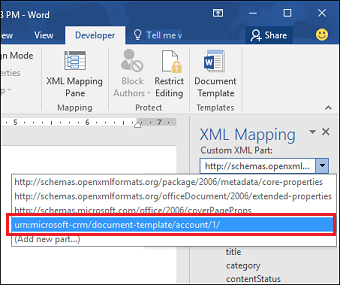

Sequentially, it takes a bit longer (2-3x longer). Right now, I'm storing 1 invoice per XML Part, and when I load my addin and do a batch read to get everything into memory, it takes something like 250-500ms avg per invoice to read them back in, in parallel (so, 250-500ms * 100-200 invoices). As mentioned, the use case is reading back all invoices, and then sporadically updating data in maybe 10-20% of the invoices. 1 XML file per invoice), or if it's better to store ALL invoices in a single large CustomXMLPart, or if there is a middle-ground (e.g. I'm not sure if it's better to store each invoice as a separate CustomXMLPart in the file (e.g. I take these invoices, render some of them in the Word doc, and then do some visual analysis in the task pane on data from the rest - where the user can write (and save) notes back into the Custom XML Parts (into that invoice that they are looking at). I'm writing an add-in, whereby I need to persist some data outside of the visible document, but inside of the docx file.Īs an example, I am storing a list of invoices (maybe 100-200 invoices), each of which have the typical structured data (name, id, dates, list of work items) and a freestyle notes section which can contain up to 5-10kb of text, instructions, etc etc.
#XML MAPPING TASK PANE FOR WORD 2016 MAC HOW TO#
I was wondering if there were any guidelines or best practices in terms of how to use CustomXMLParts in order to maximize read/write performance, or if there is an 'ideal' way to model data in the XML parts for the same purpose.
#XML MAPPING TASK PANE FOR WORD 2016 MAC MAC#
The “Recent Documents”, “Recent Workbooks” or “Recent Presentations” list in Word, Excel or PowerPoint will appear blank forever.Environment: Mac 10.12.6, Word 2016 (16.11.1), "^1.1.4"

Set the value for Show this number of Recent Documents: to 0 (zero).In Office 2013 or Office 2016 or Office 365, go to Options. Click on Office button, and then click on Word Options (in Word) or Excel Options (in Excel) or PowerPoint Options (in PowerPoint) in the bottom of Office Menu.Use steps in guide below to disable Recent Documents, Recent Workbooks and/or Recent Presentations history list for good so that Office 2007, Office 2010, Office 2013 or Office 2016 applications will not keep track and save the recently opened files history, also known as MRU list. If you are sure that you don’t want to utilize the enhanced Recent Files feature of various apps in Office 2007, Office 2010, Office 2013, Office 2016 or later, there is a way to disable the history tracking on opened files. But for users who handle sensitive or private documents, the history will expose the trace and existence of otherwise hidden files. Expanded Recent Documents, Recent Workbooks and Recent Presentations history list in Microsoft Word, Microsoft Excel and Microsoft PowerPoint of Office 2007, Office 2010, Office 2013, Office 2016 is useful as a quick shortcut to open recently used files, spreadsheets and presentations.


 0 kommentar(er)
0 kommentar(er)
